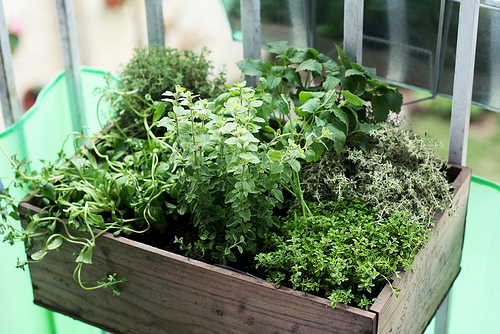A delightful culinary experience is never complete without a tinge of herbs that add exotic flavor and distinct aromas to dishes. Oftentimes, foods like this are associated with those being served in five-star restaurants. Not if you have herbs in your kitchen cabinet.

Philippine Culinary Herbs
Today, the demand for culinary herbs and its products is growing with the emergent interest of people in organically grown products, said Dr. Leonora K. Verzola, assistant manager of the Cordillera Integrated Agricultural Research Center (CIARC) and resource speaker during a seminar, “Prospect of Culinary Herbs in the Philippines” organized by the Bureau of Agricultural Research (BAR) on 25 March 2008.
Growing culinary herb has its own niche in the market, according to Dr. Verzola. Although comparatively small at present, the organic section of the market is favoring the demand for culinary herbs, reinforced by the desire to consume natural/organic products. The trend towards a greater variety of ethnic cuisine also offers the prospect towards developing this niche for culinary herbs.
Culinary herbs, as defined by Dr. Verzola, are fresh or dried leaves used as food flavoring. Among the popular commercially grown and available herbs in the country are basil, cilantro, parsley, chives, mint, dill, fennel, and tang-o. Other herbs include lemon balm, tarragon, sage, rosemary, oregano, and thyme.
Dr. Verzola said that these herbs are used and consumed as fresh cuts, live plants, or dried. Part of diversifying herbs products and as a strategy to realize its full potential, culinary herbs are also made available through value-adding. Among the value-added products developed are herbals teas, jellies, sauces, herbed vinegars, and wreaths.
Currently, the production sites for culinary herbs are located in the Cordillera Administrative Region (CAR) which has a favorable and conducive weather to grow these herbs. According to Dr. Verzola, there are four production sites in CAR that grow culinary herbs on a commercial-scale: La Trinidad, Tuba, Tublay, and Itogon.
She explained that cultural management practices for growing culinary herbs vary but essentially, they are easy to grow as they are tolerable to a wide range of soil and growing conditions. However, she emphasized that most herbs do not tolerate continuous rains, hence, must be grown under protected culture. She cited growing through a greenhouse and the open field culture.
Intercropping system is also practical for growing culinary herbs. Intercropping systems involve: parsley + lettuce, lettuce + fennel, basil + tomatoes, or brocolli + coriander.
Since the harvest and storage differ depending on the type of herb, Dr. Verzola said, fresh herb production could be labor intensive. “For example, cilantro, one of the most expensive culinary herbs we have in the market (which cost 100-300 pesos during peak season) must be uprooted, removed of its lower leaves, and then carefully packed,” she explained.
Speaking from their experience in CAR, Dr. Verzola mentioned that culinary herbs are being marketed through several means. Either they sell their products directly to traders/farmgate, vend them to wholesalers at the Baguio hangar market then to traders or retail consumers, sell them to retailers then to consumers, or trade them directly to consumers.
Culinary herbs command high price during off-season or when availability is low in conventional markets. Meanwhile, continuous and sustained production is needed for institutional buyers and well-demanded for organic and natural food stores.
The seminar is the second in the series this year which is regularly organized by BAR through its Management Information and Systems Division (MISD). This is to give way to the exchange of information and knowledge, trends, challenges, and opportunities in the agriculture and fisheries R&D sector.
The activity also serves as an important venue for information-sharing and discussions of some of the latest issues and concerns, challenges, and directions faced today.
by Rita T. dela Cruz, BAR Chronicle, March 2008 Issue (Vol. 9 No. 3)

